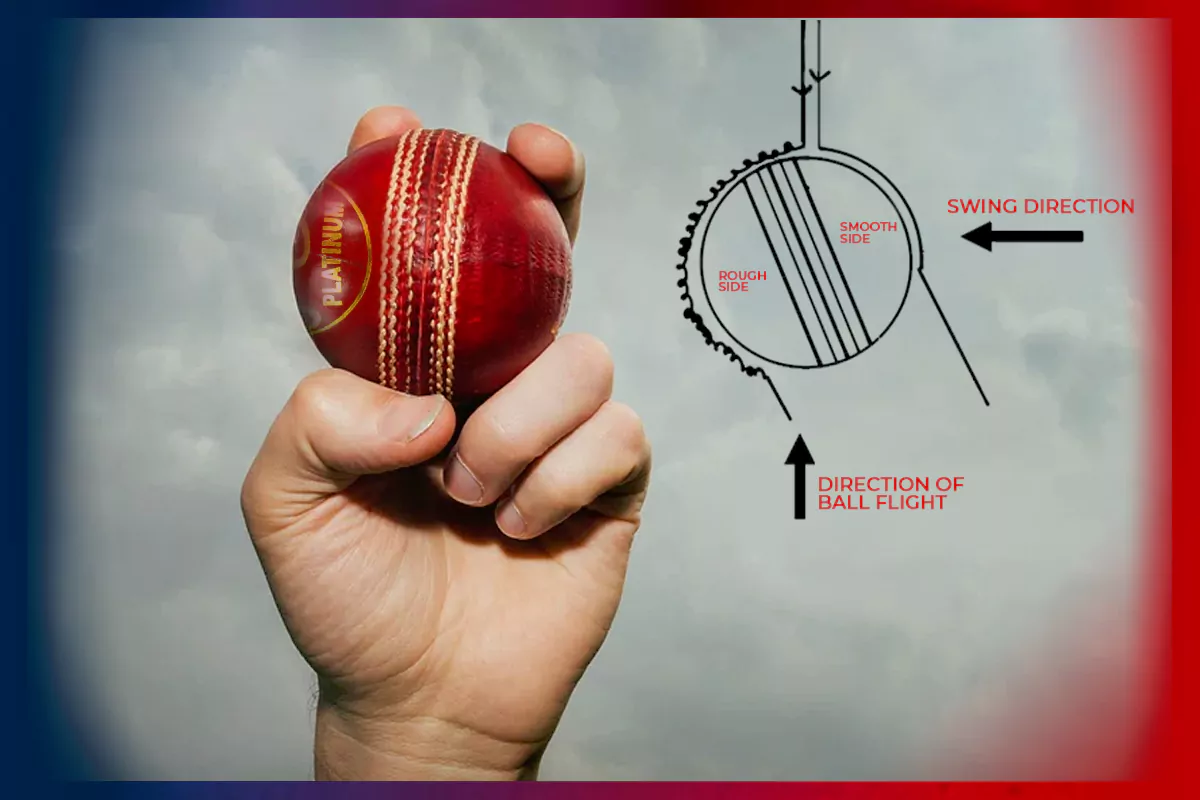Science of Swing Bowling, Cricket is a game of skill, precision, and mind games. Among its many wonders, swing bowling is a fascinating craft that can turn the tide of a match in an instant. It’s like a magician waving his wand, making the ball defy logic, leaving batsmen clueless, and bowlers rejoicing. But what exactly causes a cricket ball to swing? Is it sheer talent, or does science play a pivotal role? Let’s unravel the mystery behind swing bowling and explore its intricacies.
The Physics Behind Swing Bowling
At its core, Science of swing bowling is a battle of aerodynamics. The moment a bowler releases the ball, air resistance, pressure variations, and turbulence determine its trajectory.
A cricket ball has two distinct sides—one polished and shiny, the other rough and worn. This contrast causes air to flow differently around each side, leading to pressure imbalances that make the ball deviate in mid-air. Understanding these scientific principles allows bowlers to control swing and deceive batsmen effectively.
Types of Swing Bowling
Swing bowling isn’t a one-trick pony. Bowlers have different ways to manipulate the ball’s movement to baffle batsmen. Let’s break it down:
1. Conventional Swing
Conventional swing occurs due to the difference in texture between the two sides of the ball. It can be classified into:
- Out-swing – The ball moves away from the batsman, luring an edge to the slip cordon.
- In-swing – The ball curves into the batsman, increasing the chances of an LBW or bowled dismissal.
Newer balls produce the best conventional swing, as the shiny surface promotes smooth airflow.
2. Reverse Swing
Reverse swing is a nightmare for batsmen, especially when the ball is older. Unlike conventional swing, reverse swing moves in an unexpected direction. As the ball’s rough side becomes excessively worn, it creates turbulent airflow, making its movement unpredictable. Fast-bowling legends like Wasim Akram and Waqar Younis mastered this deadly skill to devastating effect.
3. Contrast Swing
A relatively lesser-known phenomenon, contrast swing occurs when one side of the ball deteriorates at an unexpected rate. This leads to erratic movement, making it difficult for batsmen to judge deliveries accurately.
Factors That Influence Swing
A host of factors dictate the extent and direction of swing:
1. Seam Position
The seam acts as the guiding force. Bowlers who maintain a consistent seam position allow air to flow predictably around the ball, enhancing swing movement.
2. Bowling Speed
Swing bowling is speed-dependent. Moderate speeds (between 70-85 mph) facilitate conventional swing, while reverse swing flourishes at high speeds (above 85 mph).
3. Atmospheric Conditions
Swing bowlers love overcast skies! Humid conditions and strong winds provide the perfect setting for exaggerated swing, making it even harder for batsmen to handle.
4. Ball Maintenance
Bowlers constantly shine one side of the ball to maintain its aerodynamics. However, excessive tampering is illegal and can lead to severe penalties.
The Masters of Swing Bowling
Science of swing bowling over the years, some iconic fast bowlers have left an indelible mark with their incredible ability to swing the ball. Let’s look at a few legends:
- Wasim Akram – The “Sultan of Swing,” renowned for his ability to move the ball both ways effortlessly.
- James Anderson – England’s highest wicket-taker, famous for his lethal in-swingers and out-swingers.
- Glenn McGrath – Not the fastest bowler, but his impeccable seam control made him a nightmare for batsmen.
- Dale Steyn – A perfect blend of extreme pace and deadly swing, dismantling batting line-ups with ease.
Techniques to Master Swing Bowling
For budding fast bowlers, mastering science of swing bowling demands relentless practice and precision. Here are some key techniques:
1. Grip and Release
- Place two fingers close together on the seam.
- Keep the seam upright while releasing the ball.
- For out-swing, tilt the seam towards the slips; for in-swing, angle it towards leg slip.
2. Wrist Position
- A stable wrist ensures controlled release.
- Keep the wrist behind the ball to maintain accuracy and maximize swing.
3. Follow-through
- A smooth follow-through enhances accuracy and generates maximum swing.
- Avoid excessive wrist snapping, as it can diminish the desired movement.
Why Swing Bowling is a Game-Changer
Science of Swing Bowling isn’t just a skill—it’s a lethal weapon. A bowler who can consistently swing the ball forces batsmen to think twice before playing their shots. It introduces an element of unpredictability, compelling batsmen to second-guess their every move. The ability to generate late swing can turn an ordinary delivery into an unplayable nightmare, making swing bowling an indispensableq tool in any Fast Bowler’s arsenal.
Read More: The Evolution of T20 Cricket: How This Thrilling Format Revolutionized the Game
Conclusion
Science of Swing Bowling, Swing bowling is where science meets art. Understanding the physics behind it, mastering the techniques, and adapting to conditions can transform a bowler into a match-winner. Whether it’s the gentle out-swinger that kisses the edge of the bat or the lethal reverse swing that crashes into the stumps, swing bowling remains a mesmerizing aspect of cricket. For those aspiring to dominate with the ball, unlocking the secrets of swing bowling is the golden ticket to greatness.








